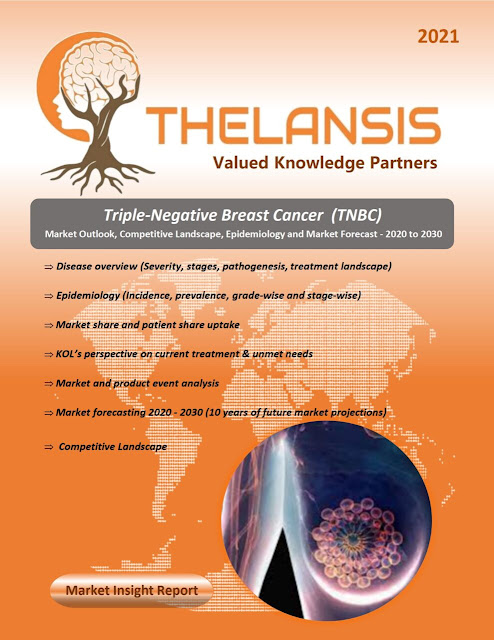Indication name: Adult Neuronal Ceroid Lipofuscinosis
Adult Neuronal Ceroid Lipofuscinosis –
Market outlook, Epidemiology, Market Forecast and Competitive Landscape Report
– 2020 To 2030 (Markets covered: US, Germany, France, Spain, United Kingdom,
Italy, Japan & China).
A genetically heterogeneous
group of neuronal ceroid lipofuscinoses (NCLs) with onset during the third
decade of life, characterized by dementia, seizures and loss of motor
capacities, and sometimes associated with visual loss caused by retinal degeneration.
Also known as adult NCL, ANCL, Kufs syndrome, Kufs disease, Parry disease,
neuronal ceroid lipofuscinosis, adult type. Mutations in several different
genes can cause adult neuronal ceroid lipofuscinosis. These include the CLN6
gene for type A and the CTSF gene for type B. There are also people with adult
onset of neuronal ceroid lipofuscinosis due to changes in the PPT1 gene, the
CLN5 gene, CTSD gene, and the GRN gene. Adult onset disease that affects vision
or the heart has been found to be caused by changes in the CLN3 gene, and the
MFSD8 gene. Some very specific changes in the DNAJC5 gene can also cause adult
onset neuronal ceroid lipofuscinoses.
Classification-
Type A presents initially with generalized tonic–clonic seizures, followed by
progressive myoclonic seizures, photosensitivity, dementia, ataxia, and
pyramidal and extrapyramidal signs.
Type B starts with behavioral disturbances and dementia, and, subsequently,
motor disturbances, particularly tic-like facial dyskinesia; ataxia,
extrapyramidal, and bulbar signs are added.
Epidemiology- the prevalence is estimated to be about 1.5 people per 9,000,000
in the general population.
Competitive landscape of Adult Neuronal Ceroid Lipofuscinosis includes country
specific approved as well as pipeline therapies. Any asset/ product specific
designation or review and Accelerated Approval are being tracked and
supplemented with analyst commentary.
KOLs insights of Adult Neuronal Ceroid Lipofuscinosis across 8 MM market from
center of Excellence/ Public/ Private hospitals participated in the study.
Insights around current treatment landscape, epidemiology, clinical
characteristics, future treatment paradigm and Unmet needs.
Adult Neuronal Ceroid Lipofuscinosis Market Forecast: Patient Based Forecast
Model (MS. Excel Based Automated Dashboard) which Data Inputs with sourcing,
Market Event and Product Event, Country specific Forecast Model, Market uptake
and patient share uptake, Attribute Analysis, Analog Analysis, Disease burden
and pricing scenario, Summary and Insights.
S. No Asset
Company Stage
1 GB226 Genor Biopharma Co., Ltd.
Phase 2
2 AL3818 Advenchen Laboratories, LLC Phase 3
3 Axitinib and Pembrolizumab Merck Sharp & Dohme Corp. Phase 2
4 Perifosine AEterna Zentaris Phase 2
5 FAZ053 Novartis Pharmaceuticals Phase 1

















